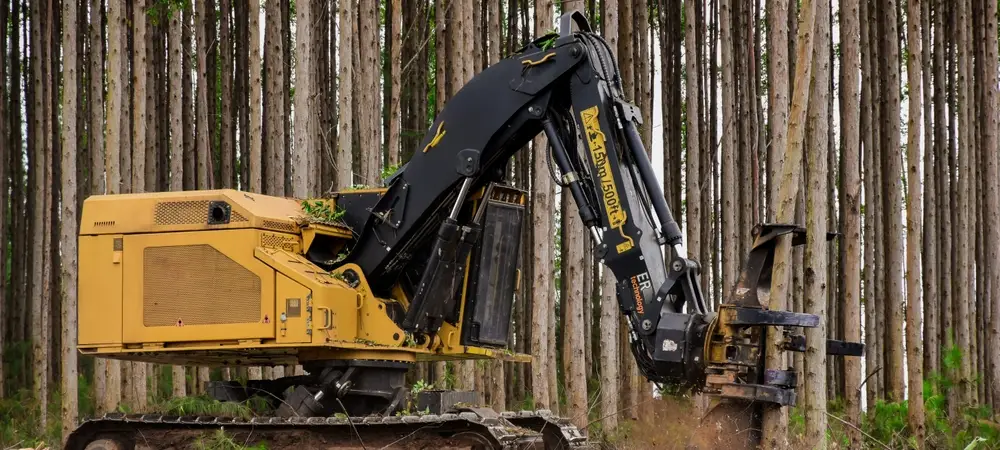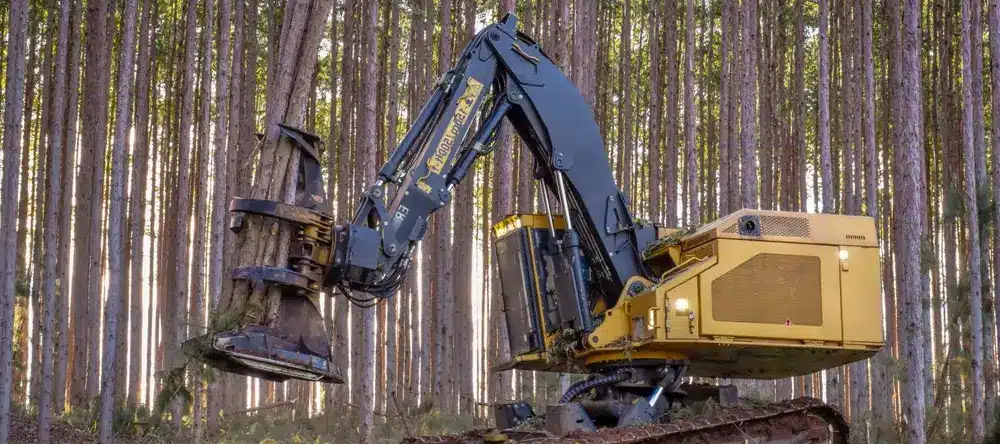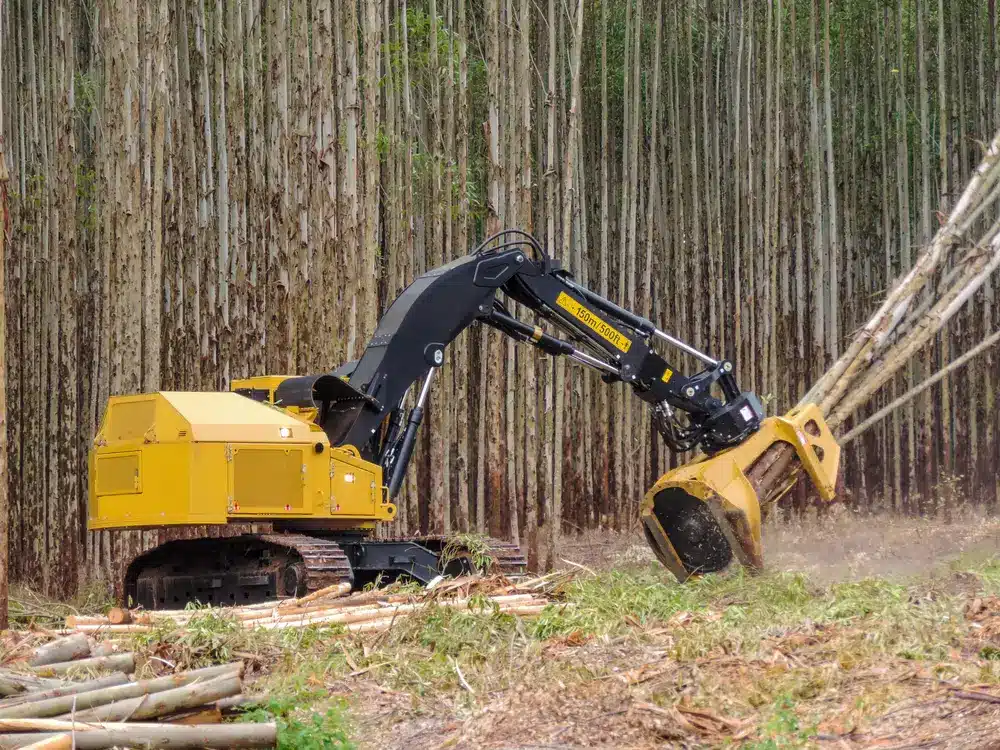Did you know that in the jungle of southwestern France, outside of Toulouse, supercharged feller bunchers demand up to 600 horsepower to effectively harvest timber? This staggering number isn’t just a spec sheet point—it translates into productivity, fuel-efficiency and forest management in our region’s unique terrain.
Power requirements
High-performance feller bunchers require a powerful engine to stay on pace with today’s forests. The majority of designs in this category incorporate engines between 250-350 hp. This much power is no display. It determines how fast the saw can cut, how rapid it’s cycles, and how much timber it can shift in a day. For instance, a 250 HP buncher may perform adequately in thin stands or flat terrain, but denser woods and larger trees frequently require 300 HP+ to be economical. That additional brawn helps you slice through big hardwoods and traverse tough, uneven terrain with ease.
Power has much to do with hydraulic flow and pressure. For a saw head to operate correctly, the hydraulics must circulate oil rapidly at great pressure. Anything under 50–60 gpm or below 5000 psi is too slow for serious work. Most high-output presses operate at 100–120 gpm, with 5500 to 6500 psi, to keep up with rapid cycle times and dense heads. There are a few jobs—felling smaller trees, say 2 to 3 inches thick—that can get by with 30–40 gpm, but that is uncommon for high-production work. At mulching, an 80 gpm pump is not uncommon, while a 26 gpm pump is considered low for operating a saw. A 74 cc per revolution pump, if spun at 2200 rpm, provides around 42 gpm for light to moderate work. A lot of operators view 60 gpm as a magic number if they’re not going to re-engineer the entire pump system.
Matching engine power and hydraulic flow to the job is the trick. Too much power burns gasoline, but too little drags work and can exhaust components.
Influencing factors

There are a handful of influencing factors that determine how much power a high-performance feller buncher requires. Every work site is unique, so these elements influence what size and power of equipment is optimal.
- Tree size and volume: Bigger, thicker trees need more force to cut and handle. Research reveals that stands with a mean DBH of 19.7 cm frequently strike maximum yield. As mean tree volume increases, power consumption increases as well. One in particular discovered 79% of productivity shifts trace their roots to tree size.
- Trees per cycle: The number of trees cut in one go matters. Maximum productivity occurred when laborers cut down four trees per round, according to their field work. To cut down more every time may mean to chop the load to pieces.
- Stand density: Stands packed with trees make it harder to move and bunch, so more power is needed to keep up the pace.
- Site topography: The shape and slope of the land play a big role. Most studies considered slopes from 0%-39%, but once slopes become steep (80%-85%), machines slow down and use more energy. Hard ground could imply using alternative procedures, such as cable or skyship systems, in lieu of feller bunchers.
- Harvesting method: Whole-tree vs. cut-to-length changes how much work the machine does. Each approach stresses the power system in a different way.
- Trail spacing: Research found that wider trails (33 m) did not slow down work compared to closer trails (13 m), so this factor may not change how much power the machine needs.
- Climate and weather: Wet or muddy ground increases resistance, making machines work harder and use more power.
- Operator skill and strategy: An experienced operator uses less power by making smart choices. Work style, speed and how you handle the buncher all influence your daily power requirements.
Hydraulic system
Hydraulic pumps and motors consume a tremendous amount of engine horsepower in a high-performance feller buncher. These beasts move, saw, and lift massive logs, so the hydraulic system has to hustle. For instance, certain hydraulic systems operate at 26 litres per minute flow, and others bigger jobs require 190–230 litres per minute. Some mighty systems operate at 380–450 litres per minute, with pressures up to 35,000 or 45,000 kPa. That requires lots of engine power to maintain, particularly if the attachments are large or complicated, such as a large saw head or a mulching drum. More hydraulic flow and pressure always equate to more power consumed.
A nice hydraulic design reduces wasted energy and makes the machine operate more efficiently. Certain new models consume 55% less oil compared to older ones. That assists in less heat, less weight, and lower costs. Adjustable valves allow operators to specify the flow rate and pressure needed for the task. For instance, small tree cutting may require only 115–150 l/min and low pressure, so the system need not be operating at peak power. For larger trees or when mulching, it could utilize full flow from both saw and implement pumps at high pressure. Open center pumps similar to Kawasaki pumps perform well in some tasks, but not others.
The type of hydraulic pump is important as well. Pump size can be 74 cc/rev., or approximately 160 lpm. @ 2200 rpm. Certain arrangements, such as in mulchers, allow you to supplement flow from more than one pump as the situation demands. Monitoring hydraulic oil condition and temperature is critical. Junk oil or excessive heat reduces efficiency and can damage parts. That translates to more engine power wasted and shorter machine life.
Travel mechanism
High-performance feller bunchers utilize either tracks or wheels for mobility, and each system introduces its own power requirements. Tracked machines typically require more power since they have more friction and weight to push. Wheels can coast with less power, but they tend to slip more on soft earth or steep inclines. On uneven or steep terrain, both varieties require additional energy to maintain motion and balance. If a feller buncher works in trees with a lot of hills, rocks or mud, it's going to consume more power simply locomoting.
Selecting the appropriate travel mechanism significantly impacts the amount of power required of the machine. Operators and owners should look at these points to pick the best travel mechanism:
- Measure the terrain: Steep hills and soft or rocky ground need more grip and power. Tracks are more effective for rugged terrain, but they consume more fuel.
- Check the work area size: In small, flat spots, wheeled machines can save power and move quicker.
- Think about speed: Wheeled bunchers usually go faster on smooth ground. Tracks run slower but perform better when the going gets rough.
- Weigh the total machine: Heavier machines with wide tracks need a stronger engine to keep up their speed.
- Look at local rules and needs: Some areas limit ground harm. Tracks distribute the load and cause less destruction, but consume more energy.
Routine maintenance of undercarriage components—such as rollers, bearings and sprockets—ensures the machine does not drain power. Worn or broken components drag on the system and require additional effort from the engine, resulting in increased fuel consumption and additional expense. A few basic checks and fixes keep the buncher running smooth and draining less power.
Operator cab

The operator cab is the focal point of a feller buncher’s workday. Comfort and unobstructed vision are critical. Most fancy cabs are climate controlled and are equipped with smart electronics that keep the operator attentive and safe. These gadgets increase the overall power requirements of the device. More power to A/C, touch screens and digital control systems like IQAN-MD4. These systems allow operators to configure controls and speeds for three different individuals, allowing each individual to work in a manner that feels most comfortable to them.
Good cab design reduces fatigue. Ergonomic controls, with slick levers and well-fitting seats, keep the operator going for long hours. The controls respond quickly, so the machine performs your wishes with no delay. These little things accumulate into better work and less stress on the human inside. A four-way leveling system assists as well, stabilizing the cab on slopes. For tracked models with self-leveling cabs, safe work can be done on slopes as steep as 50%. Wheeled units with no leveling are limited to slopes under 20%. Over 40% and even the best machines experience a decline in speed and productivity.
Clear sight is equally important with comfort. New cabs come with cameras, bright lights and big windows. These add-ons require additional power too, that means the operator can observe more and operate safer.
Some energy-saving cab features include:
- LED lighting instead of halogen bulbs
- Smart HVAC with variable-speed fans
- Auto-shutoff screens and displays
- Low-draw cameras and sensors
- Insulated cab walls for better climate control
The cab is not just a seat, it influences how efficient, how safe and how long an operator can work.
Machine features
High-performance fellers require strong engines since they are lifting, cutting and moving heavy logs through rugged woods. Reinforced frames and heavy booms place more strain on the machine, so high torque and horsepower engines are required. Intelligent control systems assist distribute power to where it’s required, for the equipment operates fluid and firm. Automation features can trim waste, maximizing every last bit of power. Quick-attach systems, which allow laborers to switch out tools or bits quickly, can drive up the fundamental power requirements, but the increase in work speed often compensates.
- Engine HP & Torque Underneath is a strong motor. Newer versions even had engines that were 10 percent more powerful and 16 percent more torquey than before. This additional power assists the machinery on steep inclines or large trees. The engine consumes up to 5% less fuel, so it pays for itself over time and runs longer between stops.
- Operator control panel With customizable controls, each worker can select their preferred pattern and speed — potentially making work safer and more efficient. It’s a system that works for the majority of users — and makes the machine more versatile.
- Hydraulic] machine features. New Hydraulic Tank Design Slashes Oil Usage 55% Less oil equals less expenses and less damage to the environment, it still pumps hard for heavy duty work.
- Leveled and Cab Cozy A four-way leveling system maintains the entire machine flat, even on steep or bumpy turf. This keeps the driver safe and vigilant. The cab itself is nice and comfortable and open all around with great visibility.
Service and Durability Swing-out doors provide rapid access for repairing or inspecting critical components. Heavy-duty filters and a clever adjustable fan maintain engine cleanliness and cooling.
